Ranked: These Are the Fruits With the Most (and Least) Sugar
#30DaysOfSugar
How Much Sugar is in Your Favorite Fruit?
Ever wondered about the sugar content in your fave fruit? If you are looking to control your sugar consumption (including natural sugar) or even just learn more about what you’re eating, you may be wondering exactly that - and this is why I'm going to share with the sugar content of 25 top fruits + a nifty freebie download that you can print out and take with you so you’re always in the sweet know!
Ever wondered about the sugar content in your fave fruit? If you are looking to control your sugar consumption (including natural sugar) or even just learn more about what you’re eating, you may be wondering exactly that - and this is why I'm going to share with the sugar content of 25 top fruits + a nifty freebie download that you can print out and take with you so you’re always in the sweet know!
Sugar is everywhere these days, from cereal to salad dressings, and problem is that this sweet ingredient can make a big impact, not just on your muffin top, but also on your general health and well being. 🙁
Over consumption of sugar is linked to abdominal fat, high blood pressure, high blood sugar, and unhealthy cholesterol levels, and over consuming both sugar and refined carbs may raise the risk of some types of cancers, increase the rates of recurrence and decrease the rates of survival after cancer therapy.
Also, sugar has been connected to a higher risk of Alzheimer disease. This is scary stuff!
All of this has led many consumers and low-carb dieters to want to avoid eating sugar in all forms… even fruits.
Fresh fruits are healthy, nutritious foods that are good sources of vitamins, minerals, phytochemicals, and fiber.
The thing is, the consumption of fruit should generally be moderated, because of the fructose. Let’s talk about that for a sec.
Fruit 🍎 contains a natural sugar called fructose, but it also contains fiber, and it’s this fiber that helps control blood sugar levels from the usual spike fructose causes, especially when compared to refined sugars which are empty carbs, with zero nutrients, and which metabolize quickly causing all sorts of trouble (like those aforementioned scary facts).
But you can’t just rely on this fiber.
The sugar found in fruit can still have the same blood-sugar-spiking effect if eaten in excess. You see now!
Now, how much sugar you should be eating from fruit, and what makes sugar in fruit different from refined sugar is quite a big subject (because there are so man variables), so I’ve written a whole blog post on it over here - make sure you check it out to get all the details.
Remember, over-consumption of sugar, means ALL sugars from ALL foods. 🍭 When you're looking at your sugar consumption, don't just count for number of spoons of table sugar you've had, but also the natural sugar from the fruit you’ve had.
So, when I tell you to keep your general average sugar intake to the 25 grams suggested by the World Health Organization, you should know that this means natural sugar too.
Before we get started, have you downloaded my free ‘Sugar and Fiber in Fruit - The Ultimate Printable List’? It’s an easy to use printable list of everything covered in the blog post!
Again, there are many variables to how much sugar intake you can have (like for people with high insulin levels or who are overweight) so you should read more about that in my post Are Fruit Sugars Bad for You!
So, whether you’ve decided you want to limit high sugar fruits, want to watch your intake of all sugars or you just want to make more informed food choices, I got you covered.
Here’s the sugar and fiber in some of your favorite fruits listed from highest to lowest:
1. Figs
Total Sugar: 1 cup, chopped = 29.3 g
Fiber: 5.2 g
Maybe you only know these fruits from Christmas figgy pudding, but if you like to eat figs raw, try to your serving small as this fruit has a high sugar content.
However, figs are high in fiber and the best plant source of calcium out there, which can help fend off osteoporosis as well as other health issues.
Figs are also the most jam packed source of a variety of vitamins and minerals, including: vitamin A, vitamin C, vitamin K, B vitamins, potassium, magnesium, zinc, copper, manganese, and iron.
Slice this fruit and add it to your salad or savory chutney with dinner.
2. Pomegranate Seeds
Total Sugar: 1 cup, arils/seeds = 23.8 g
Fiber: 7.0 g
Oh… this must be why my iced pomegranate tea is always so sweet. Pomegranate seeds are quite high in sugary fructose! But what makes these shiny ruby 💎fruits healthy?
Pomegranates are actually one of the healthiest foods on earth, being packed with nutrients and powerful plant compounds, rich in fiber and s vitamins A, C, some B vitamins and minerals such as calcium, potassium and iron.
Although these two compounds found in pomegranates are what give the REAL benefit: punicalagins and punicic acid, making pomegranates three times higher in antioxidant activity than EVEN green tea.
They have been shown to boost memory and exercise performance. Additionally, pomegranate seeds may also help to reduce the risk of some serious illnesses like heart disease, cancer, arthritis and other inflammatory conditions.
If you want to reap the best health benefits pomegranates have to give, I suggest you eat the arils (seeds) directly, or sprinkle them onto your salads or yogurt.
3. Mango
Total Sugar: 1 cup, chopped pieces = 22.5 g
Fiber: 2.6 g
This glowing fruit is rich in vitamins, minerals and antioxidants, and has been linked in studies to improvements in immunity, digestive health and eyesight, as well as a lower risk of certain cancers.
Their variety of antioxidants - isoquercitrin, quercetin, astragalin, fisetin, gallic acid, and methyl gallate - may help protect against colon, breast, leukemia and prostate cancers.
The only thing is that mango is high in sugar without a lot of fiber to counter it, so try not to eat this fruit super often and make sure you moderate your serving size.
Also, it’s a good idea to eat mango with oats or another fibrous food to slow down the digestion of its sugar. One of my favourite ways to eat mango is to dice it and add to my quinoa salad - the sweet taste of mango goes really well with the nutty taste of quinoa.
4. Tangerines
Total Sugar: 1 cup, or two tangerines sliced = 20.6 g
Fiber: 3.5 g
These mini oranges rank high on the sugar content list, but tangerines also contain a nice amount of nutrients, including potassium, thiamin, folate and their amount of B12 promotes healthy hair growth, reduces hair loss, and slows the graying of your hair.
Although they have a high sugar content, you should keep a note that one single tangerine usually at most only has around 12 grams of sugar in it, with one cup of tangerine being about 2 medium sized tangerines.
5. Bananas
Total Sugar: 1 cup, sliced = 18.3 g
Fiber: 3.9 g
Bananas contain an important amount of nutrients. They can aid digestion and help beat gastrointestinal issues, are full of potassium helping your heart health and blood pressure, contain a good amount of vitamin C, are loaded with skin-boosting manganese, and contain many powerful antioxidants.
The only thing is that bananas are really high in sugar and carb when compared to other whole fruits, so make sure you commit to not going over a five-inch portion a day at most.
I suggest you eat protein and/or healthy fat with your serving of banana to help your body slow down the absorption of the sugar in the bloodstream.
6. Sweet Cherries
Total Sugar: 1 cup, with pits = 17.7 g
Fiber: 2.9 g
Yummy, juicy sweet cherries! I think cherries are everyone favourite fruit - how can you not like them?! 😄
But these red delightful sweeties aren’t just delicious - they’re also packed with vitamins, minerals, and powerful health benefits.
Besides sweet corn, nothing quite represents summer’s harvest like sweet cherries. One cup of the little red guys has about 306 milligrams of potassium (nearly that of a small banana), which helps keep blood pressure in check. Cherries also contain good amounts the antioxidants of quercetin and anthocyanin, which help protect against cancer and cardiovascular disease.
Cherries are a good source of vitamin C, fiber, and high in antioxidants and anti-inflammatory compounds, which may reduce the risk of chronic disease.
Their potassium and polyphenol antioxidants help protect the heart, while quercetin and anthocyanin may help protect against cancer.
Research has also shown that the anti-inflammatory properties of cherries may benefit those with arthritis and gout, and their melatonin may help improve sleep quality. Finally, consuming cherries can help reduce exercise damage and soreness.
How highly nutritious!
They do also have pretty good fiber content to help with slowing the digestion of their high sugar content, but that doesn’t mean you should overdo eating them.
Try having yummy cherries with a spoon of yogurt, oatmeal, or chia pudding.
7. Plum
Total Sugar: 1 cup, sliced = 16.4 g
Fiber: 2.3 g
Plums are relatively low in calories, only containing on average 30 calories for one whole. Also, they contain their fair share of 15 different important vitamins and minerals in addition to fiber and antioxidants.
Some of those many vitamins and minerals may help reduce your risk of several chronic diseases. Try eating plums in a fresh salad.
8. Pineapple
Total Sugar: 1 cup, chunks = 16.3 g
Fiber: 2.3 g
Pineapple first originated in South America, named by early European explorers after the similarity in their appearance to a pinecone.
Pineapples are yummy 🍍 and low in calories, and are packed with nutrients and antioxidants, as well as a variety of vitamins and minerals.
They are especially rich in vitamin C and manganese. Manganese is like nature’s energy drink, since it’s a mineral that is essential for energy production.
Pineapple’s other nutrients, antioxidants and helpful compounds fight inflammation, disease, and are linked to improving digestion, lowering risk of cancer, boosting immunity, relieving arthritis symptoms and speeding up recovery from surgery and strenuous exercise.
9. Kiwi
Total Sugar: 1 cup, sliced = 16.2 g
Fiber: 5.4 g
They are brown and fuzzy, but you’ve been eating kiwis wrong… yep, you guessed it: you need to eat the skin!
Kiwis are packed with flavor and health benefits, and while their skin is fuzzy and odd looking, it’s sweet, tangy, and just as good for you. Kiwis are loaded with antioxidants, vitamin C, vitamin K, vitamin E, folate, potassium and fiber.
The skin contains an awesome amount of cholesterol-lowering fiber, vitamin C, and more antioxidants.
Just make sure that if you eat the whole kiwi, you also rinse the skin just like with an apple.
10. Grapefruit
Total Sugar: 1 cup, sections = 15.9 g
Fiber: 3.7 g
As a person who has lived in Florida 🌴 like palm tree or something for most of her life, I do love myself some tropical citrus fruit, like my sweet and sour friend the grapefruit.
Grapefruits do have a higher sugar content, so keep your serving to half a fruit.
Despite the sugar, grapefruit is overflowing with nutrients, antioxidants and fiber, making it one of the healthiest citrus fruits you can eat.
Research has shown that eating grapefruit comes with some awesome health benefits, including weight loss and a reduced risk of heart disease. Grapefruit may also benefit your immune system, since its vitamins and minerals are known for preventing infection, and helping you regulate blood pressure and cholesterol.
The antioxidants may prevent development of several chronic conditions, like cancer, and the citric acid can help reduce the formation of calcium oxalate kidney stones. Wow!
Also if you eat grapefruit before a meal it may help you lose weight, as its fiber and water content promotes fullness and keeps you hydrated, which can lead to a reduction in calories.
One thing to note is that if you take certain medications or have sensitive teeth, you may need to limit your grapefruit intake or avoid it altogether. Consult your doctor!
11. Apricots
Total Sugar: 1 cup, sliced = 15.3 g
Fiber: 3.3 g
These sun coloured fruits are sure to brighten your day and help you shed your winter weight.
You might already know to eat dried apricots in moderation because of their high sugar content, but fresh apricots are in no way as bad.
Pick up fresh apricots during their short season in late spring to load up on vitamin A, a vitamin that helps your skin glow, and potassium. Besides flushing out extra water weight, potassium also keeps your metabolism running high, and is crucial for the digestion of nutrients such as carbohydrates and fat, and aids in the absorption of energy from these nutrients.
Round, yellow, and cute, this fruit looks like a small peach 🍑 and tastes as tart as a plum.
Apricots are super high in antioxidants, which can help guard your body against environmental damage, like from pollution, sunlight, and cigarette smoke, and can benefit your skin.
Apricots are low in calories and fat and are an excellent source of vitamins A and C.
They contain an antioxidant called flavonoid, which help protect your body from oxidative stress, and also contain a good amount of beta carotene, lutein, zeaxanthin, and vitamins C and E, which protect your eyes against damage.
Also apricots have a high water content, and help you keep hydrated.
To reap the best benefits, eat cute little apricots whole and unpeeled, and discard the stone - it’s inedible.
12. Grapes
Total Sugar: 1 cup = 15.0 g
Fiber: 0.8 g
Grapes are high in sugar but offer a selection of health benefits due to their high antioxidant content and beneficial plant compounds, such as resveratrol, that may protect you from chronic health conditions, such as diabetes, bowel diseases, cancer and heart disease.
While grapes are high in sugar, they have a low glycemic index, and the compounds in grapes help protect against high blood sugar.
Choose fresh red grapes over white grapes for the best benefits. 🍇
13. Blueberries
Total Sugar: 1 cup = 14.7 g
Fiber: 3.6 g
Blueberries are popular fruits that are low in calories, and a bona fide superfood.
Calorie for calorie, blueberries are the best source of several important nutrients, high in fiber, vitamin C and vitamin K, and also have the most antioxidants of all popular fruits!
Several studies suggest that blueberries reduce DNA damage (which causes aging and cancer), and their antioxidants have been shown to reduce the risk of heart disease. Blueberries benefit your brain function and may fend of some effects of age-related mental decay manifested in Alzheimer’s and prevent you from having to look into dementia care services in the future.
Studies have shown a regular blueberry intake to be tied to lower blood pressure and to have anti-diabetes effects.
Also, the anthocyanins found blueberries have been connected with a reduction in the risk of heart attacks.
Just like cranberries, blueberries have certain substances that help prevent certain bacteria from binding to the wall of your bladder, which could prevent UTIs.
Blueberries are SUPER FOODS!! 🦸
Did you know that some fruits are better than others, and the best fruits for you are fruits with skin (the skin is usually very rich in antioxidants and fiber) and small berries. Why are berries healthier for you than larger fruits? Because they have more skin, gram for gram and are lower in sugar. Just another perk from our blue friends, BLUEBERRIES!!
14. Oranges
Total Sugar: 1 cup, sections = 14.0 g
Fiber: 3.6 g
Yum! Oranges are the fruit of the sunshine state, round 🍊 with a pitted peel, juicy and sweet or bitter, depending on the variety.
Tangerines may contain more vitamin A than oranges, but oranges are lower in calories and higher in vitamin C and fiber. Beat that tiny oranges!!! 😉
Oranges are a good source of fibre, B vitamins, vitamin A, calcium, potassium, and vitamin C content which helps protect your cells from damage, can reduce muscle soreness when consumed before a workout!
They also have flavanones, and research has shown that citrus phytochemicals may protect us from conditions including heart disease and cancer, and have some anti-inflammatory, antiviral and antimicrobial benefits.
Additionally, orange peel contains higher amounts of some nutrients than the flesh, so try and eat recipes with orange zest for an extra boost.
15. Honey Melon
Total Sugar: 1 cup, diced = 13.8 g
Fiber: 1.4 g
Honeydew melon, or honey melon, is a yummy fruit with a diverse nutrient profile.
Honeydew melon may help reduce blood pressure (because of its high potassium and low sodium content), contains many nutrients vital for bone health, is rich in vitamin C (which promotes collagen and may protect you from sun damage and supports immune function), and contains lutein and zeaxanthin, two antioxidants perfect for supporting healthy eyes and vision.
Also, honeydew melon is mostly made of water and contains electrolytes that hydrate you.
Although they are low in fiber, these melons still keep you full because of this water content, and can actually help you slim down thanks to their natural belly bloat-busting diuretic effect.
Without fiber, you’ll get a large spike in blood sugar when compared to other fruits, so pair honeydew with some fiber rich food. And for the tastiest fruit, opt for in-season and ripe melon.
16. Pear
Total Sugar: 1 cup, slices = 13.7
Fiber: 4.3
Pears are highly nutritious, and contain beneficial vitamins, minerals and plant compounds, some of which promote gut health, have anti-inflammatory properties, and anticancer effects.
Pears have been linked to a lower risk of diabetes, and boosting heart health, and contain pectin, which keeps you from feeling hungry, as it slows digestion. Another benefit of this digestion effect is that it may reduce blood cholesterol and decrease the risk of heart disease and colon cancer.
17. Apple
Total Sugar: 1 cup, chopped = 13 g
Fiber: 3 g
Who doesn't love the simple but delicious apple? Humble, easily portable, yummy and also nutritious. 🤭
As they say, an apple a day keeps the doctor away! 🍎
Apples are high in fiber, a good source of vitamin C, contain antioxidant and anti-inflammatory compounds that may regulate immune responses and fight against asthma, and contain polyphenols, which have been linked to lower blood pressure, risk of type 2 diabetes, and risk of stroke.
Apples are also high in soluble fiber, which helps lower cholesterol.
Antioxidant and anti-inflammatory compounds found within apples may also boost bone health (and eating fruit in general can help preserve aging bone mass).
One average medium apple is equal to about 1.5 cups of fruit, making it 3/4 of the your 2-cup daily recommendation of fruit. Make sure to always eat both apple skin and flesh for the best results.
18. Peach
Total Sugar: 1 cup, slices = 12.9 g
Fiber: 2.3 g
Whole peaches have a nice amount of antioxidants and vitamin C, fab for building connective tissue.
This fruit may also fend off high cholesterol, inflammation, obesity and diabetes, because peaches contain phenolic compounds which modulate different expressions of genes.
Did you know that consuming foods rich in vitamin C helps the body develop a resistance against infections and may help ward off cancer (by eliminating harmful free radicals)?
19. Nectarines
Total Sugar: 1 cup, slices = 11.3 g
Fiber: 2.4 g
Nectar-tastic (see what I did there)! 😏
Eating a nectarine can hit with 8 percent of your daily fiber needs - fiber-tastic (sorry I did it again)!
Nectarine’s potassium boosts heart health. A medium nectarine contains about 285 milligrams of potassium or around 8% of what we need every day, and this potassium helps with cellular functions like regulating metabolism, maintaining pH balance, assisting with protein synthesis and digesting carbohydrates.
These fruits are also a good source of vitamin A, vitamin C, carotenoids, and provide vitamin E, B vitamins, calcium, and some iron.
Due the large amount of vitamin C, flavonoids, anthocyanins and phenolic acids, both peaches and nectarines have great antioxidant properties.
20. Cantaloupes
Total Sugar: 1 cup, cubed = 9.4 g
Fiber: 0.6 g
If you normally opt for watermelon or honeydew melon every summer, and don’t pay any attention to cantaloupe, now you should.
You can’t do much better than cantaloupe when it comes to melons - they’re nutritious, yummy, and versatile. This humble fruit definitely deserves more respect!
Cantaloupe contains beta carotene (a type of carotenoid, which when eaten, is converted into vitamin A and acts as an antioxidant that fights cell-attacking free radicals), and also contains a well rounded arsenal of vitamins and minerals, including potassium, vitamin K, niacin, choline, calcium, magnesium, phosphorous, zinc, copper, manganese, and selenium. Plus, just one cup of cantaloupe contains 1.5 grams of protein. Cool huh!
Dehydration can cause a lot of health problems for you and puts you in risk of developing kidney stones. Now, obviously plain old water is the best way to stay hydrated and avoid this, but the water and electrolyte packed cantaloupe can help.
This melon is certainly a well-rounded fruit choice.
To find a ripe cantaloupe, look for one that’s symmetrical, slightly heavy, creamy colored, light yellow-orange (with no green), and that smells sweet and maybe a bit musky.
21. Watermelon
Total Sugar: 1 cup, diced = 9.4 g
Fiber: 0.6 g
You might be wondering why watermelon is so low on the list when folks are always going on about how high in sugar this sweet summer fruit is. Let me explain.
While the watermelon’s sugar content isn’t as high as other melons, the problem is with the effect of its sugar on your body.
You see, watermelon is low in fiber, making it faster to digest, but as you may know by this point it’s also what makes this watery melon rank high on the glycemic index.
However, because they’re low in carb, watermelons don’t have too bad of an impact on your blood sugar levels.
Watermelon also contains citrulline, an amino acid that may increase nitric oxide levels in the body. Nitric oxide helps your blood vessels expand, which lowers blood pressure. Other vitamins and minerals in watermelon are very heart healthy, and include vitamins A, B6, C, magnesium and, you guessed it, potassium.
22. Strawberries
Total Sugar: 1 cup, halves = 7.4 g
Fiber: 3.0 g
Strawberries are bright red, juicy, and as sweet as sweetness itself. 🍓✨
They’re super rich in antioxidants, vitamin C, and manganese, and contain a decent amount of vitamin B9, potassium and plant compounds, which benefit blood sugar control and general heart health. But, make sure you eat these juicy fruit whole, since slicing strawberries exposes them to light and oxygen, which may break down their vitamin C!
Fresh strawberries are also quite high in water (consisting of mainly fibers and simple sugars), which keeps their carb content low, and are low on the GI, so as long as you moderate, you shouldn’t get big blood sugar level spikes.
One thing to note is that strawberry allergy is common, especially among children, and that individuals who are sensitive to birch pollen or apples may experience symptoms after consuming strawberries.
23. Blackberries
Total Sugar: 1 cup = 7 g
Fiber: 7.6 g
Small, juicy and deep purplish black, these fruits contain a variety of nutrients like potassium, magnesium and calcium, as well as vitamins A, B, C, E, and are super rich source of anthocyanins, the super-powered antioxidants that actually give blackberries their deep purple color.
A study from European Journal of Nutrition found that eating wild blackberries may provide protect the brain because of the polyphenol content, and other studies have shown blackberries to have antibacterial properties, and anti-inflammatory and anti-viral effects.
Quick fact: while there is no 'superfood' that can prevent cancer and some risk factors for cancer are unrelated to your diet, there is evidence that a regular healthy diet can help reduce the risk of cancer.
As published by the Nutrition & Cancer Journal, some fresh blackberry extracts may help to prevent tumour growth and spread of cancer (though more research is needed).
24. Raspberries
Total Sugar: 1 cup = 5.4 g
Fiber: 8.0 g
Raspberries come in all different varieties of colour: from black, purple, and golden, to the reddish pink color of the average raspberries we all know and love, these tasty treats are an edible fruit from a plant species in the rose family. Who’d have known?
They are a fab source of fiber, vitamin C and contain many important vitamins and minerals including small amounts of vitamin A, thiamine, riboflavin, vitamin B6, calcium, and zinc. They are also high in antioxidants, and plant compounds that fight against cell damage, reduce your risk of chronic diseases, and reduce signs of aging.
Raspberries contain beneficial compounds that may combat various cancers (though, again, more research is needed)!
Also, raspberries may improve arthritis because of their anti-inflammatory effects and can impact your blood sugar positively, and help keep you satiated due to their high fiber and tannin content.
Actually these tart berries have the highest fiber content out of this whole list of fruits.
Fresh raspberries are best during the summer and fall, and avoid any that look crushed or moldy.
25. Cranberries
Total Sugar: 1 cup, whole = 4.3 g
Fiber: 3.6 g
Cranberries aren’t just for juice and cranberry sauce during the holidays; if you eat these berries without sugar, you’re actually getting quite the healthy boost.
Fresh cranberries are nearly 90% water, and are mostly made up of carbs and fiber.
They are an excellent source of vitamins and minerals, including manganese, copper, and vitamins C, E, K1 and are super rich source of various bioactive plant compounds, like A-type proanthocyanidins, which may help prevent UTIs.
It gets even better: if consumed on a regular basis, cranberries may reduce the risk of stomach cancer.
The crazy thing is that the Ocean Spray company (or, the company that is synonymous with cranberries in the USA), basically said to the FDA that cranberries need sugar to taste good. Another case of big companies always making excuses for health benefit-ruining SUGAR!
But cranberries don’t need sugar to taste good my friend - mix cranberries and blueberries with yogurt and you’ve got yourself a healthy lunch that's as yummy as heck!
By the way, cranberry products and plain cranberries are usually perfectly safe when consumed in moderation, but excessive consumption can cause upset stomach, diarrhea and may increase the risk of kidney stones in predisposed individuals, so keep that in mind.
Wow, are we done with all 25 fruits already?
Has the amount of sugar in your favourite fruit surprised you? There’s nothing like a list to help keep things in perspective! 😀
So, in summary!
Make sure you moderate your serving sizes, focus on eating fruits which are rich in nutrients, and have a healthy balanced diet without tons of processed sugar.
As long as you don’t have high insulin levels, eating a potassium rich 🍌 banana at breakfast isn’t going put you on the path of diabetes.
Stay mindful about both the amount of sugar and the amount of fiber that you’re consuming via fruit.
For example, watermelon is high in sugar without a lot of fiber, so you should moderate it more than you would berries, because berries are lower in sugar and have more fiber-rich skin gram for gram.
Make sure you get my nifty print-out ‘Sugar and Fiber in Fruit - The Ultimate Printable List’ that you can keep on your fridge or take with you to the store and always stay in the know.
If you are still worried about the sugariest fruits, let me tell you something: it’s totally okay to eat them, but just make sure it’s a small portion and pair it with extra fiber and protein, to help balance your blood sugar levels!
Also remember this: you’re better off eating a piece of fruit with a bit more sugar than eating an artificial, processed snack that has less overall grams of sugar, but with a higher percentage of that being added processed sugar.
As long as you enjoy a lifestyle that includes lots of veggies and plant-based fats like avocado, and that limits fruit to 2-3 servings per day, you’re well on your way to the healthiest lifestyle possible.
But remember that balance is key.
If every once in a while you want to indulge in a bowl of ice cream, or have an extra serving of fruit, it won’t break the bank!
Before I go, I want to note that some fruits like avocados, lemons, and limes are very low in total sugar and don’t need to be restricted based on the amount of sugar they contain.
Overall, make sure you savor and enjoy your fruit and skip the fruit juice because there is no fiber alongside the sugar.
Don’t forget, if you are looking to Take control of your sugar consumption, make sure you get my nifty and FREE ‘Sugar and Fiber in Fruit - The Ultimate Printable List’
You can print it out and keep on your fridge or take with you to the store.
You’ll always be in the know about how much sugar you’re eating and be able to make sure you’re getting enough fiber with it, so you’ll have balanced blood sugar levels whether you’re heading for breakfast and ordering oatmeal and fruit or shopping at the farmers market.



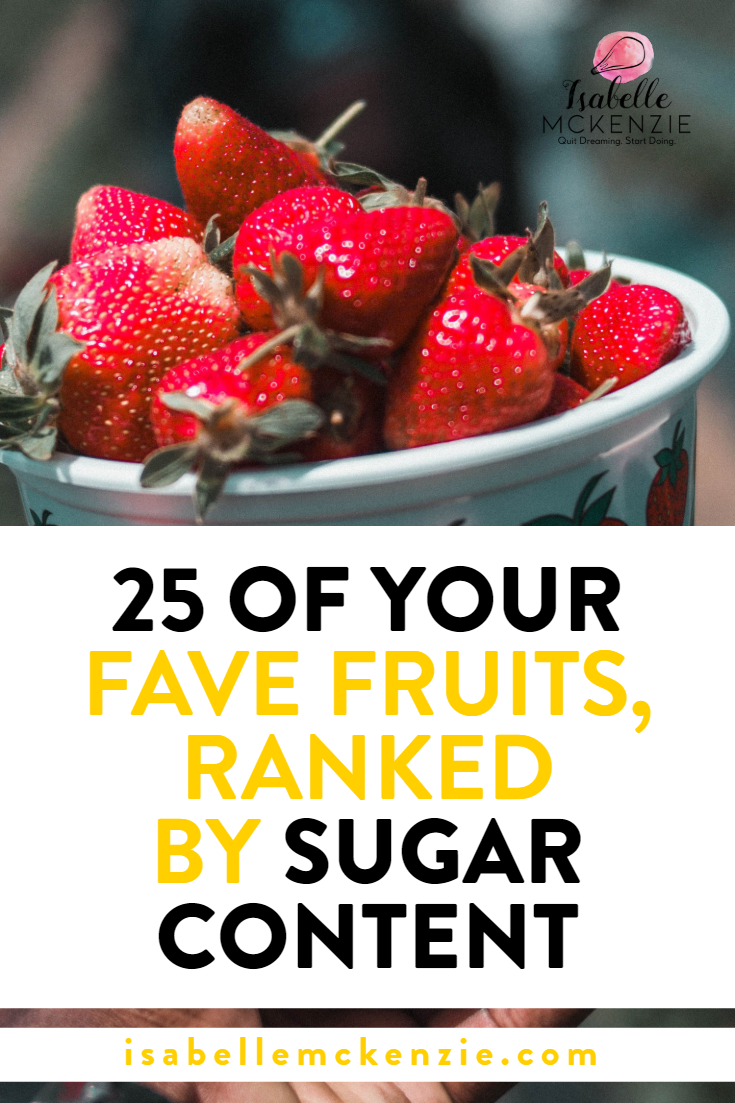
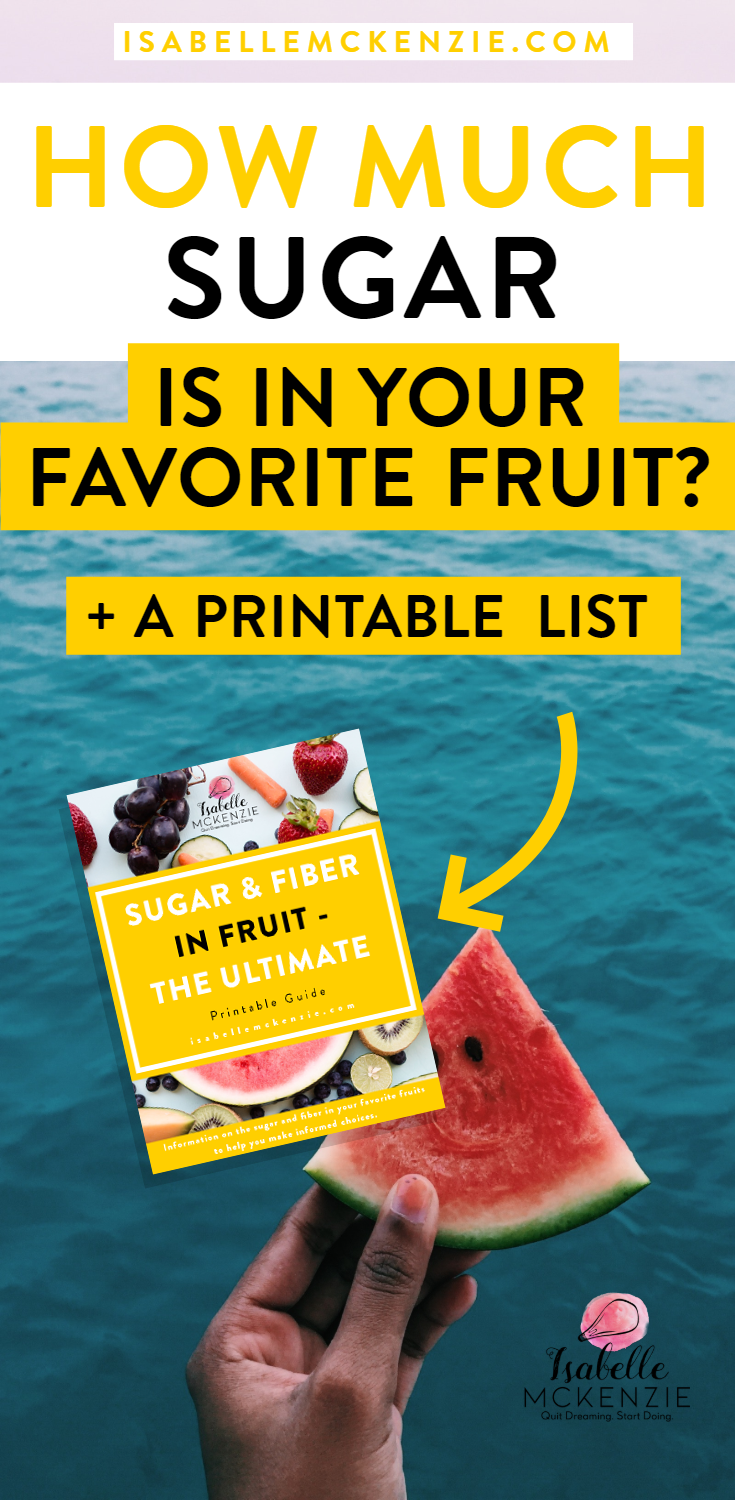
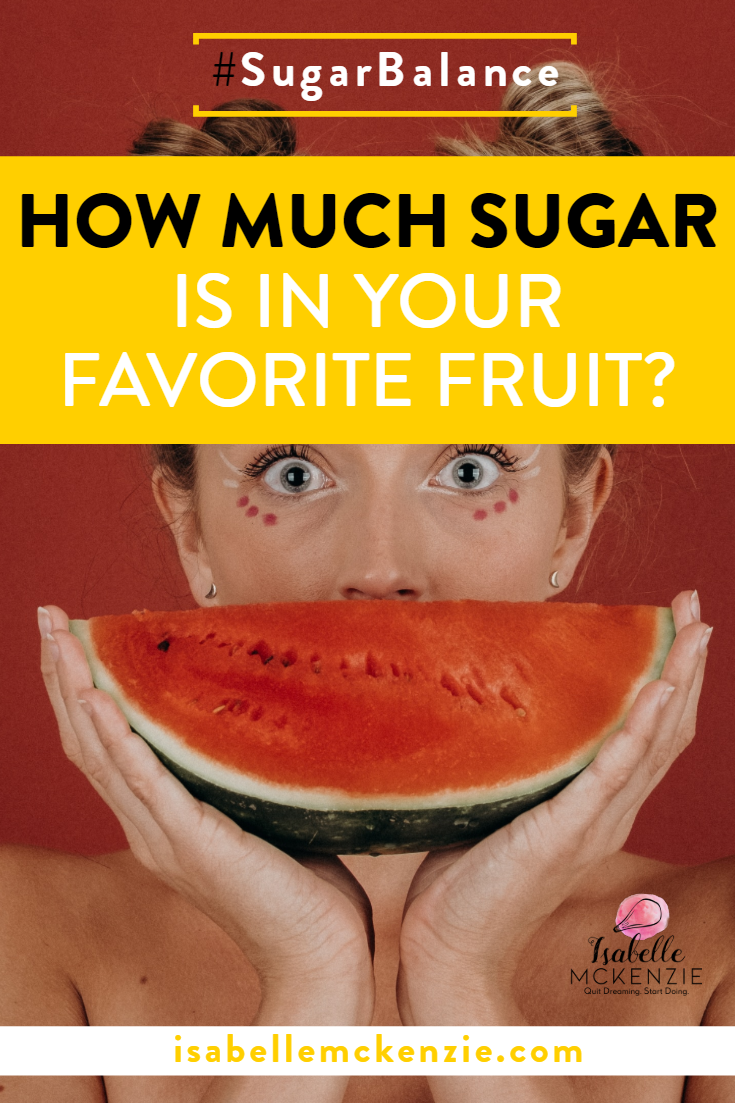
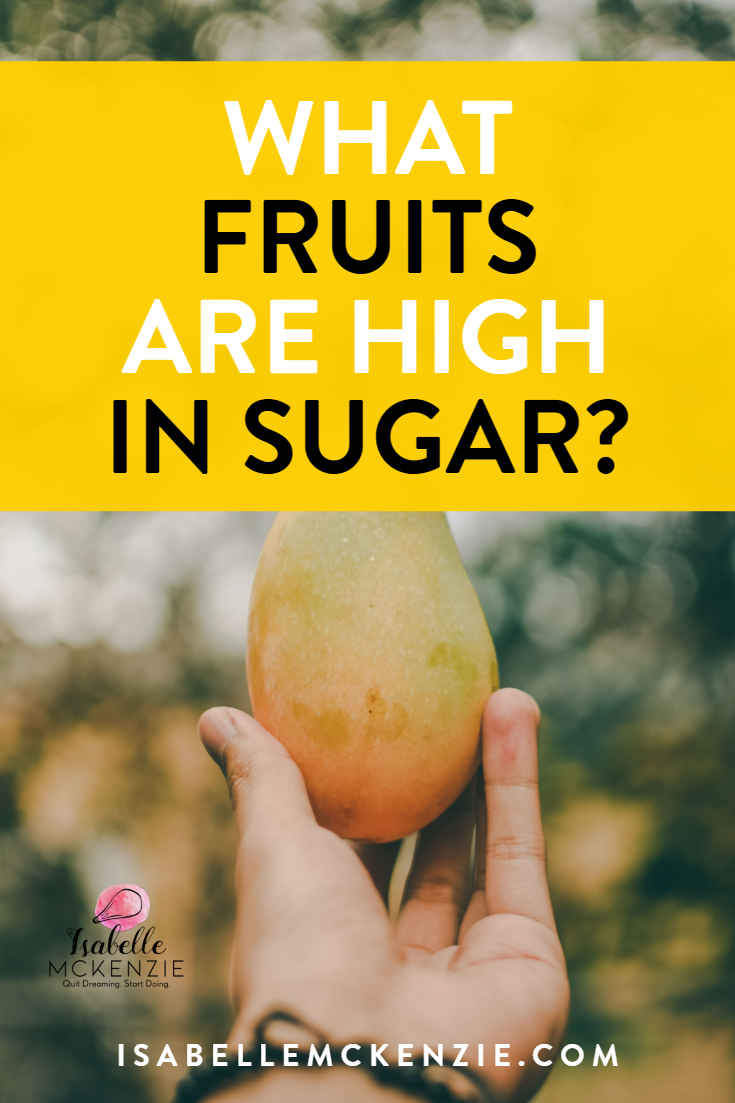
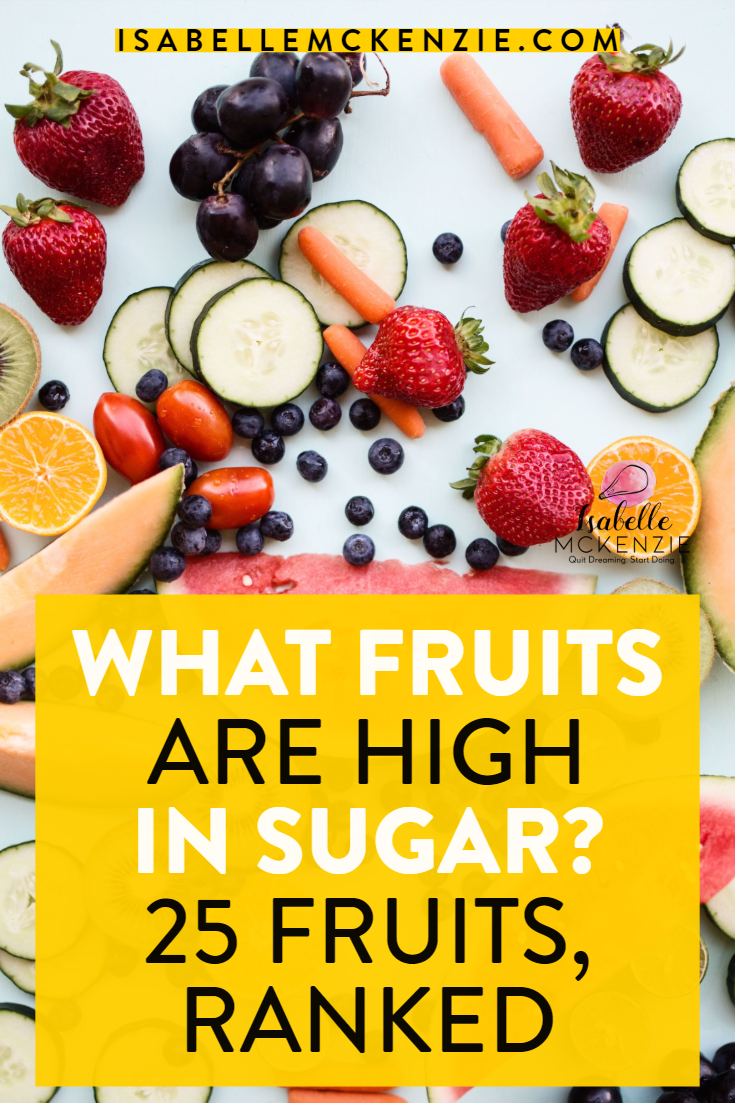








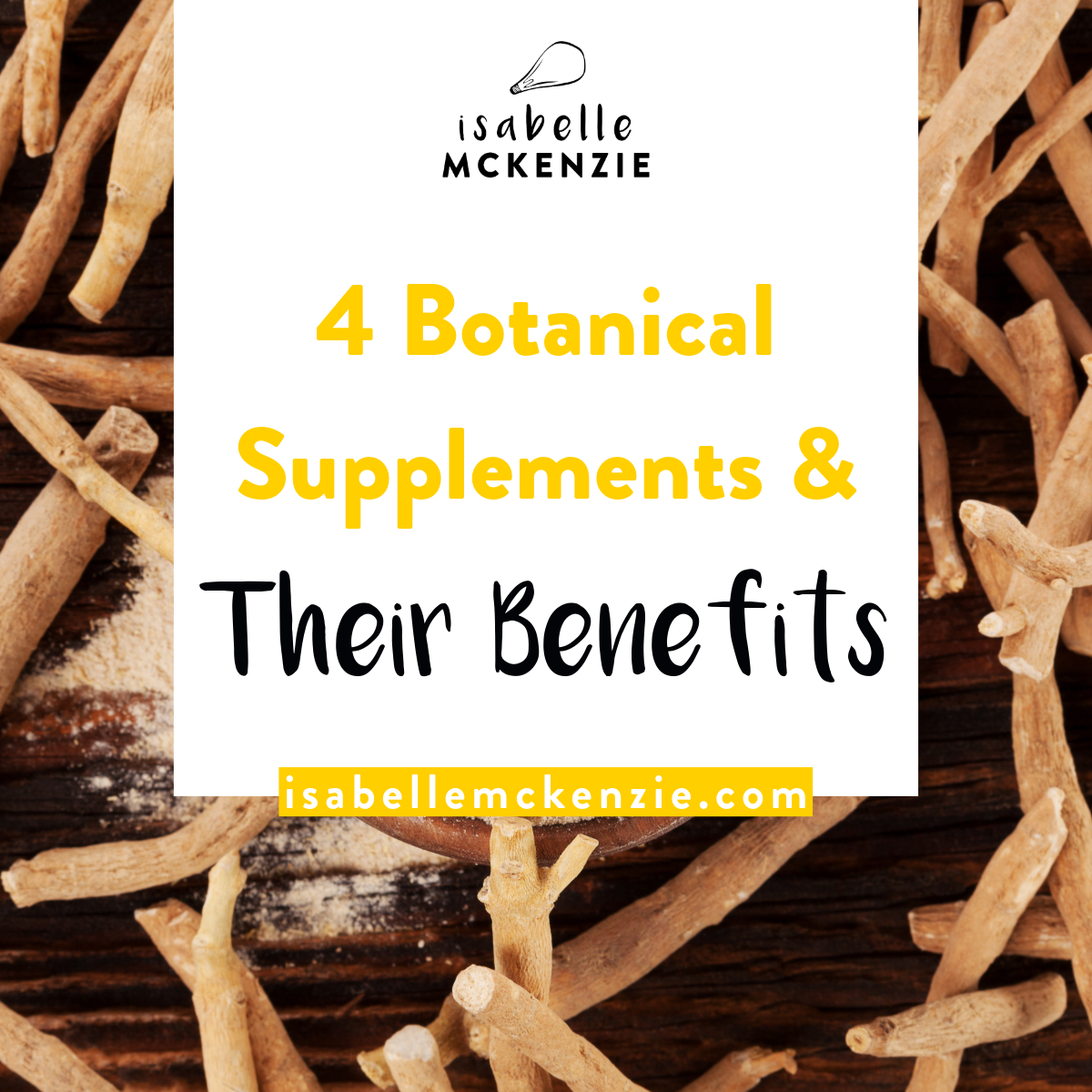




Here’s a Free Powerful Training for You!
Join us to learn how to banish binge/stress eating, food obsession and food cravings, and get lean and healthy for good (without struggling) ... especially for people who have tried everything and are still stuck.
SAVE MY SEAT